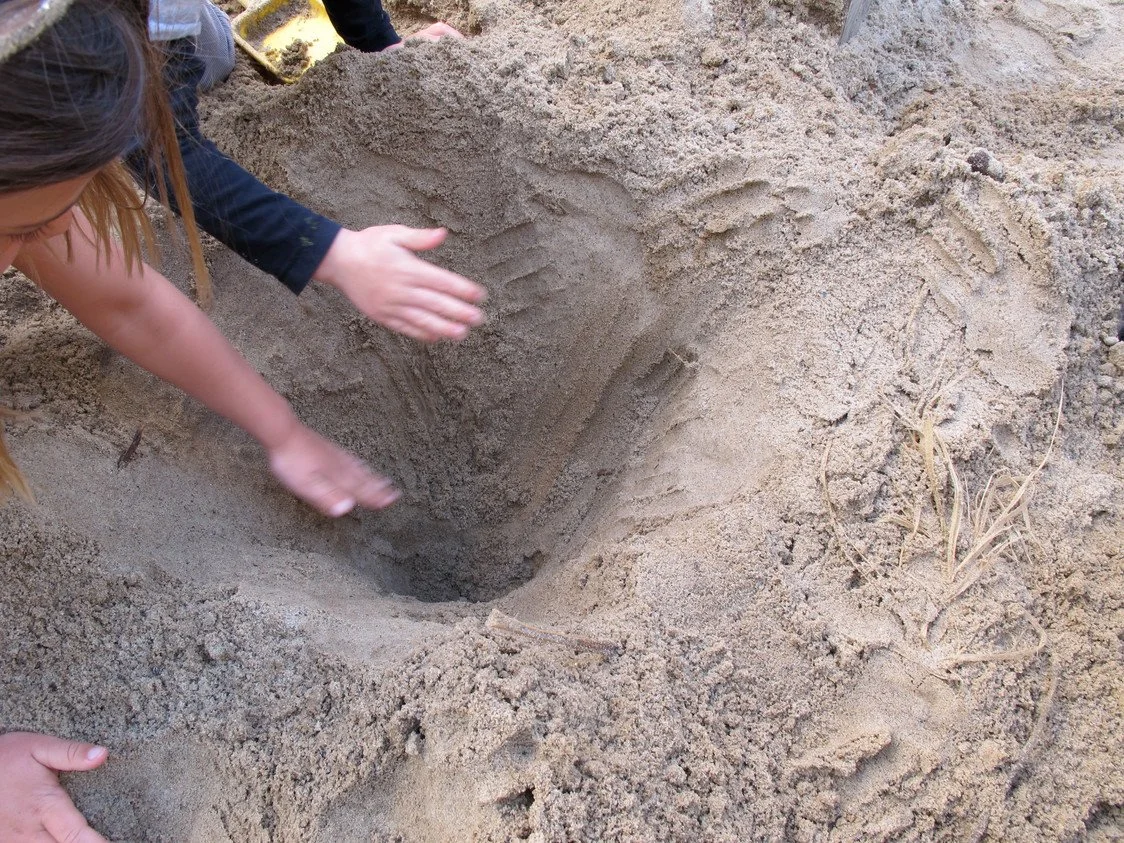It's Poison! Fun With Theory of Mind
February, 2019
It’s common for young children to engage adults in early symbolic and social play: family games, restaurant or grocery store, fairy tale reenactments, and on and on.
Within these scenarios, children practice certain fundamental interactions with adults, such as caretaking, or negotiating. One particular exchange that children routinely initiated with me revolved around deception:
Child: (handing me a pile of sand) Eat this.
Me: What is it?
Child: It’s cake.
Me: Oh, I love cake! (pretend to eat)
Child: It’s poison!!!
This was a subset of a broader theme of turning the tables on adults –which besides killing, included punishments and false accusations. I was always unsure how much I should indulge children’s urges to play at rejecting adult control, but there was no denying how much children wanted to try.
Back to the game: When the child would triumphantly reveal her diabolical plan, I was expected to grip my throat, stick out my tongue and execute a comically dramatic death. At which point one or more children, sometimes including the poisoner, would administer medicine so I could come back to life.
And then they would be back. Only this time would be different:
Child: Eat this.
Me: Oh no! I’m not eating anything you give me. You gave me poison and said it was cake.
Child: But this really is cake. I promise!
Me: You promise?
Child: Yes! I promise.
Me: Well, I do love cake.
Child: Eat it. It’s not poison.
(pretend to eat it).
Child: It’s poison!!!
Three and four-year-olds were the main perpetrators, but some curious and quick-witted twos (especially younger siblings) would give it a try as well. Two-year-olds, notably, tended to practice a very crude version:
Child: Eat this. It’s cake.
Me: I don’t believe you. I think you’re trying to poison me.
Child: (stuffing the handful of sand in my face) YOU’RE GONNA EAT IT!!! Poison!
Four and five-year-olds, on the other hand, could pursue the game over several rounds, coming up with endless creative angles for trickery. The most basic was, “but this time I’m really, really, really telling the truth.” But there were more sophisticated strategies: It was my bad twin; look, I’ll try it first; I went to jail and I won’t do it again. Now and then, someone would just skip the poison. See, they would say, you can trust me. The next cake was inevitably poisoned. (One child even switched up the climax, declaring, “it’s Hydrogenated Oil!”)
This range in strategy tells us a great deal about how a child’s brain changes between the ages of two and five. Many two-year-olds can pretend that sand is cake. They might even pretend that sand is poison that they are passing off as cake. But when the adult says, “I don’t believe you,” they can’t work with that effectively, because they can’t represent the adult point of view.
In order to best someone through several levels of deception and trickery, (I know that you know that I know that you know. . .), you must have developed a Theory of Mind. That is, you must understand that you have a mind that generates thoughts and feelings, and that other people have minds that generate thoughts and feelings, and other people’s thoughts and feelings are not always the same as yours.
Theory of Mind rests on two basic cognitive capacities: Decentering - the ability to envision a perspective other than yours (i.e. who can see you in a hiding place); and Metacognition - thinking about your own thinking.
There is a famous test of a child’s developing theory of mind called The Sally Ann. Sally Ann, a child is told, is playing with her doll. She puts the doll in her toy chest and leaves the room. Her mother comes in and puts the doll in her dresser. When Sally Ann comes back into the room, where will she look for her doll?
A child with a Theory of Mind will know that Sally Ann will look in the toy chest, because Sally Ann thinks the doll is still there. A developing child will say that Sally Ann will look in the dresser, because that’s where the doll is.
Virtually all higher-order thinking relies on a Theory of Mind:
Empathy arises naturally from caretaking and emotional instinct. But it develops as a capacity that supports learning when children acquire a working model of how their actions affect others, and how that in turn affects them.
Strategy requires not just understanding, but predicting the responses and actions of others and planning our response in advance. It also relies on our understanding that we can’t force people to make certain moves. We must outwit them.
Problem Solving requires analysis, evaluation, and synthesizing multiple viewpoints and contributions, all of which depend on understanding the ideas of others and how they relate to our ideas.
The highest learning takes place when we can grasp not just the ideas of others, but their intent and process. Only then can we synthesize and apply the ideas of others to create something of our own.
So, while children who play at poisoning their teacher may appear to be motivated by emotions – conflicted feelings about adult control – they are also engaged in cognitive research about how the mind works, and how to work with the minds of others. This reminds us that the brain not only needs interactions to develop, but that it also develops largely for the purpose of interacting.

